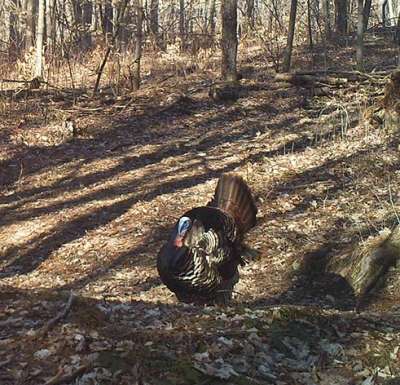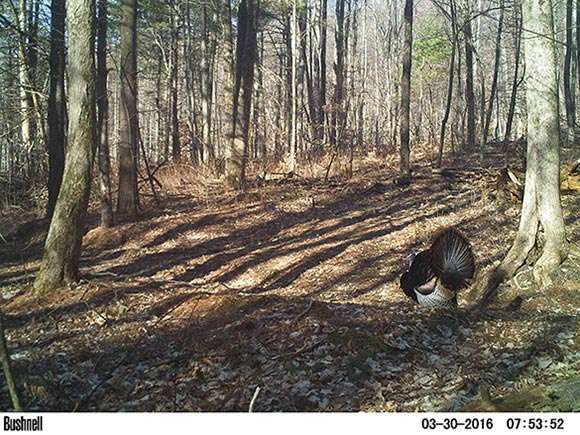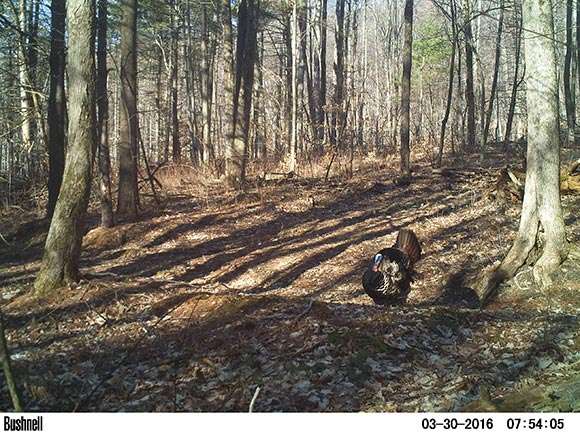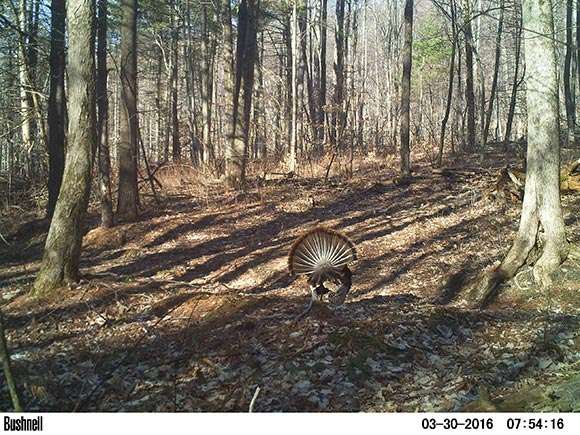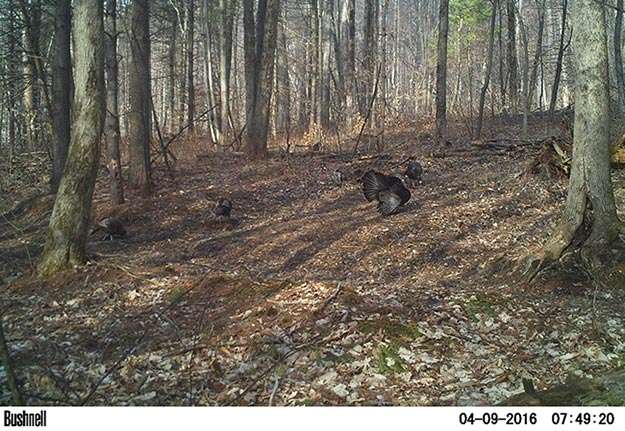May is turkey season in the Northeast, a time when the sight and sound of a strutting tom is sure to stir a bird hunter’s heart. In this series of photos, a hot tom dances with himself. He enters the frame in full display – his tail fanned, his wing tips dropped. As he turns to face the camera, we get a good look at the “mood colors” on his face – vivid hues of red and blue and white. We can also note his elongated snood – that little flap of skin that hangs over his beak. (When he’s not preening suggestively for the camera, the snood is retracted and sits upright on his head like a tiny horn.) The tom then turns to search the western woods, before exiting stage right.
If you note the dates on the first three pictures, you’ll see they were taken at the end of March. Our lonely dancer was lonely because breeding season hadn’t quite started yet. The last photo was from mid-April, and you can see that he’s joined by a harem of hens. After being bred, each of these females will go off alone, scratch a hole in the ground, and then lay one egg per day for the next 10 or 12 days. During the egg-laying period, a hen will spend most of her time away from the nest, so as not to draw attention to it. When the last egg is deposited, she’ll begin a continuous incubation period that lasts about a month.
By the time turkey season rolls around in May, most of the breeding is over and the successfully bred hens will be sitting. In a cold, hard wildlife management calculus, this makes the males expendable. They’ve done their biological duty. This management approach has allowed both turkey populations and hunting opportunities to flourish. In the early 1900s, after years of unregulated hunting, there were only about 30,000 turkeys left in the country. Today there are around 7 million birds.
As far as I know, this particular mature bird has made it through the hunting season. If his luck holds out, he’ll probably hook back up with the bachelor group he spent last summer with. The hens who are successful in hatching young may merge with other families to form large flocks that’ll soon be patrolling the freshly cut hay fields. Unsuccessful females may join other chickless hens to form small spinster flocks.


